8+ Sample Educational Development Plan
-
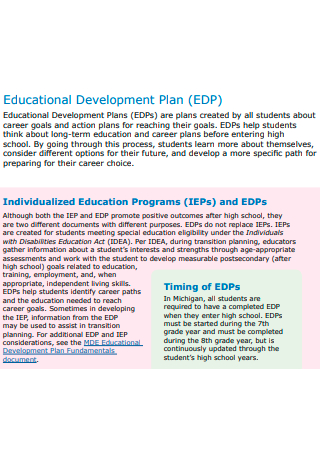
Educational Development Plan Template
download now -
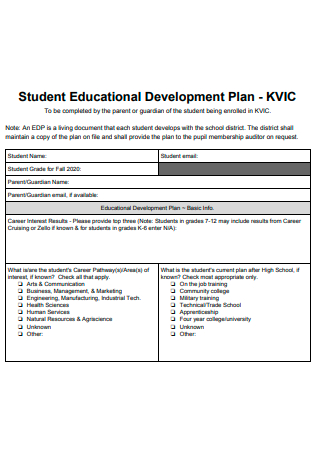
Student Educational Development Plan
download now -
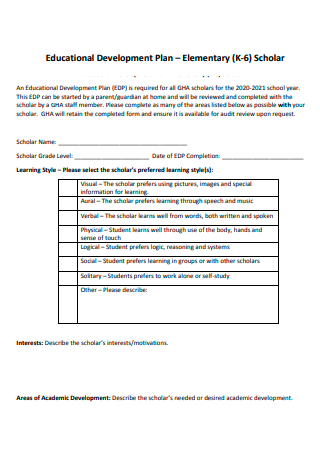
Elementary Scholar Educational Development Plan
download now -
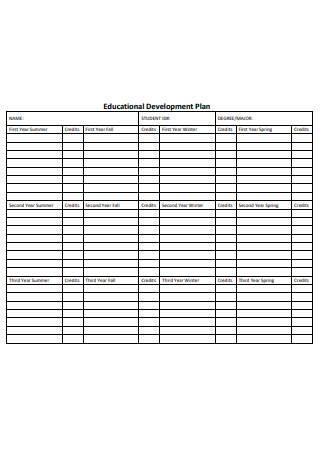
Basic Educational Development Plan
download now -
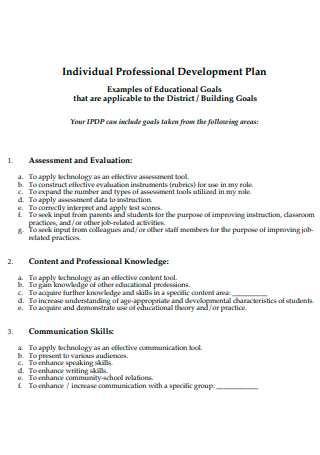
Educational Goals Individual Professional Development Plan
download now -

Educational Development Plan in PDF
download now -
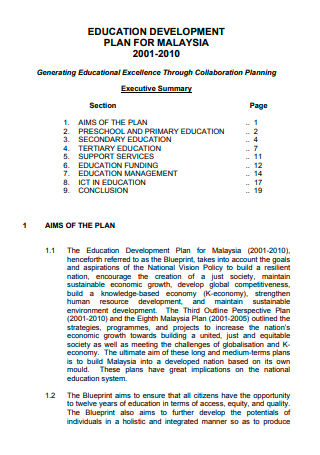
Standard Education Development Plan
download now -
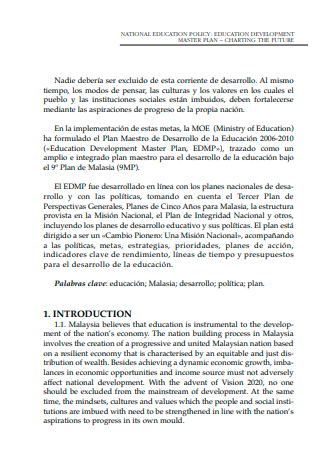
Education Development Master Plan
download now -
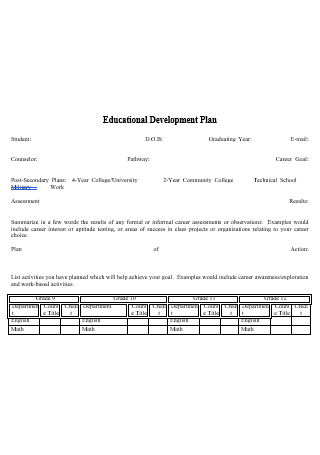
Educational Development Plan in DOC
download now
FREE Educational Development Plan s to Download
8+ Sample Educational Development Plan
What is an Educational Development Plan?
Elements of an Effective Development Plan
What Are The Types of Education?
What are the Benefits of Education?
Step by Step Process of Creating an Educational Development Plan
FAQs
What happens after an Educational Development Plan is written?
What is a Talent Portfolio?
Is an Individualized Education Plan the same as an Education Development Plan?
What is an Educational Development Plan?
Before we talk about what is an educational development plan, we should familiarize ourselves first with what a development plan is. To put it simply, a development plan is a list of actionable steps that someone could take towards achieving the goals for their career that they have established. It helps them gain specific insight into how they can reach their aspirations for their career, such as earning a new certification, getting a raise, and securing a job promotion.
An educational development plan is a document or a portfolio that showcases a student’s current interests, abilities, and a path towards their career. They are plans created by all students about career goals and the appropriate action plans for reaching their goals. This document also lets students think about their long-term education and their career plans.
Elements of an Effective Development Plan
Development plans can be written with solid intentions in mind, but when it lacks a single important element, it can be rendered ineffective. Here are some of the elements that can be considered as important when writing a development plan.
- Using an intentional change framework. This element of a development plan typically answers the questions “What is your target end state?”, “What are your strengths and weaknesses in trying to make this change?”, and “What factors could get in the way of trying to make a change?”
- Commitment to reflection. This serves as the most important element of the development plan yet this is the one that is constantly forgotten or not written properly. Including a commitment to reflection in our development plan enables us to have reflective awareness that slowly but constantly changes the way in which we think and act. Small and frequent cycles of action and reflection also enable us to change.
- A clear vision of where we want to be. This element of a development plan enables us to think about where we want to be in the future and the reason for wanting to be there. Making your vision as specific as possible across all areas in your life, including where you want to work, where you want to live, and your various interests are also helpful. The more specific you can be about your goal, even right down to how you feel about it, the easier it will be to hold on to it whenever things suddenly get tough.
- The skills you need to develop. Another essential step of your development plan is thinking about the skills that you need to develop and subsequently understanding why this is important to achieving your vision. It is important to understand and make sure that the skills you are targeting to develop are linked to a purpose, and in turn, linked to your vision. Neglecting this, your personal development efforts can fail.
- Priority levels. It is a given that you cannot do everything at once. This is why prioritizing tasks is important. The same applies to setting goals in a development plan. An example of a good way of prioritizing is by listing all areas that you want to develop then sorting them by importance and by how urgent it is to develop immediately. Once you’ve sorted it, you now have a much better idea of which development areas you need to focus on first, either they are very time-critical or they hold a huge impact on your plans.
What Are The Types of Education?
There are many types of education that are widespread around the world. While one country practices a different school system compared to another one, standards are set so that students can continue to study even while they are based in a different country. Here are the types of education:
What are the Benefits of Education?
When people are educated, they can significantly contribute to the society in their various fields creating a stable and thriving community. Here are some of the benefits of giving education to individuals:
Step by Step Process of Creating an Educational Development Plan
By going through an effective educational development plan, students learn more about themselves, consider a number of different choices for their future, and develop a more specific path for preparing for their career choice. With that being said, here are the steps that should be followed when making an educational development plan:
1. Start with a self-assessment.
By having a self-assessment, students allow themselves the opportunity of evaluating their professional interests, knowledge, and skills. By creating a self-assessment, it also allows them to examine their current standings in relation to the goals that they’ve set in their career. As the students determine the skills and interests that they possess, they can identify the areas in which they can improve on in order to obtain their goals. In performing this step, identifying transferrable skills is essential.
2. Set a goal.
The goal that students should set in their educational development plan should be trackable, making it easier to update whenever milestones are reached. Goals should also be structured in a way that makes it easy to achieve them by completing small steps. The goals that are set in the development plan can and should be sorted by priority so that they can be identified quicker and easier. It can also be sorted as short-term, mid-term, or long-term goals.
3. Develop strategies.
Strategies will define how students achieve the goals that they’ve set in their development plan. A variety of approaches can be listed, including experimental learning, exposure, education, and reflection. A good majority of the strategies that are listed in the development plan should be experimental. By making it experimental, it gives the students the important hands-on experience that they need whenever they develop new skills.
4. Develop a timeline.
It is critical to in an educational development plan to develop a timeline because it makes students define when they want to achieve their objectives, and setting a timetable is also essential to sticking to their chosen strategy for development. Knowing that a deadline is set also increases the chances of succeeding in getting the chosen task done on time. It is also important to plan the aims that are set on a regular basis, and it should also be noted to give each target more time than it will usually take because things rarely go as planned. Targets should also be scheduled around the opportunities to be pursued.
5. Write everything down.
Keep detailed notes of the educational development plan that can be updated or altered as time progresses. Writing it down is important because it helps the students remember their overall goal and every single step that they’ve laid out for themselves. It is also important to refer to it regularly.
6. Evaluate and measure progress.
Before committing to the development plan being created, it is essential to evaluate it first. Make sure that the goals listed are SMART goals (Specific, Measurable, Achievable, Realistic, Timely). Setting unreasonable goals will make the educational development plan ineffective and stressful. Assessing the progress being made in the timeline is also equally important. Measuring the progress in the educational development plan will help students know if they are hitting their checklists, meeting their targets, and it also lets them know if they are on track or not for reaching their goals. It should also be noted that the plans listed in the development plan can change as the goals progress.
FAQs
What happens after an Educational Development Plan is written?
After a student’s educational development plan is written, it should then be reviewed and updated on at least an annual basis. The development plan process could also include annual work samples that document the student’s progress towards any anticipated goals and accomplishments. The academic institution must also establish periods to perform an annual review of the educational development plans and update them as their students choose and/or change high school courses or career pathways.
What is a Talent Portfolio?
A talent portfolio is a device for gathering and recording information that can be used to showcase the diverse skills and talents of a student. It relates to an educational development plan because a talent portfolio gives the student a competitive advantage by showing their technical skills, highlighting any career-ready practices that they already have, and creating a long-lasting impression to any potential employer or admissions committee. Each element of the talent portfolio should be traced back to the educational development plan, career goals, and unique abilities.
Is an Individualized Education Plan the same as an Education Development Plan?
No, they are different documents since an individualized education plan is a program that solely focuses on children with identified disabilities and ensures that whenever they attend any elementary or secondary educational institution, they receive specialized instructions and related services. This plan is developed by a team of individuals that come from various educational disciplines, the child with the disability, family members, and designated advocates. An individualized education plan typically includes all the related services for which the child qualifies, and the measurable annual goals and objectives for the child’s education. Although the individualized education plan (IEP) and the education development plan (EDP) promote positive outcomes right as a student finishes high school, they are different documents with different purposes, and also, an EDP will not replace an IEP.
As standard practice for any development plan, an educational development plan must be frequently updated as important milestones are reached and as the student learns new things. This document should also serve as a continual reference or a touchstone for a student who follows it. If an effective EDP is created, the student will have a series of concrete steps to follow to ensure a blooming career ahead.
In this article, examples of an Educational Development Plan are posted for use as a personal reference if you need to make one.
